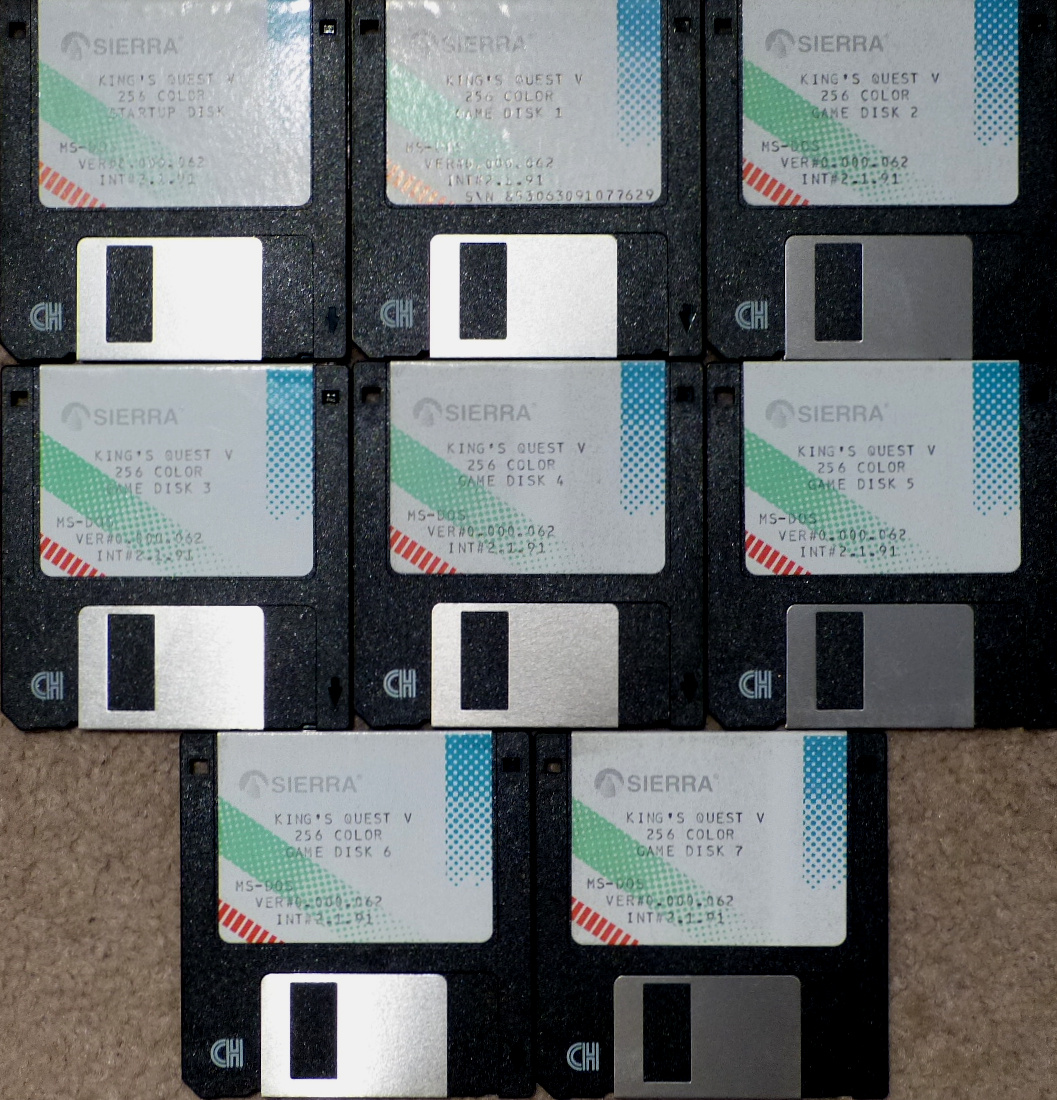

Nor can we CLIMB LADDER - YOU CLIMB UP BUMP YOUR HEAD ON THE CEILING AND FALL, DAZED BUT ALIVE. These seem like good adventurous artifacts to have with us, so we'll take them along except we can't TAKE LADDER, as it as another object that does not remove.

There are several doorways along an east-west hallway, and we can access the attic where a ladder and sledgehammer are available. We can SAVE GAME to a single slot, and this seems like a good time to do that before we explore the upstairs. The lit candle (successfully collected on my third try) proves helpful for finding our way around in the dark. So we'll have to do this more efficiently.

However, in my second attempt it was already too dark to find the matches after I got to the kitchen, so even though I could see and open the cabinet, I could not LOOK or FEEL around in there after darkness fell like a rock. South of the entry hall is a dining room, with a candle on the table. It is SAM, THE MECHANIC, killed by some sort of blunt object. a corpse! You can tell he is dead by the lump, the X'd out eyes, and the cartoon pain lines coming off of his head. We can try to GET BOOK but IT DOES NOT REMOVE, making this a sorry excuse for a library.īeyond the library is a fenced side yard, where we discover. Going west from the kitchen through a door leads us into a forest maze in the early going, I didn't have enough inventory objects to map it out, so I had to restore and do some more investigation indoors.Įast of the entry hall is a library, containing a note reading, "7 - 6 = 1 THEN I AM DONE!" So one of the 7 guests intends to kill the other 6. Soon IT IS DARK, YOU CAN'T SEE a match will give us light for a few turns, but it's not clear how many we have so finding a more permanent source of light is in order. The cabinet contains some matches, and the refrigerator presents an empty pitcher. We also start to be warned that IT IS GETTING DARK as we consume moves. The kitchen contains a refrigerator, stove and cabinet. So this will be a treasure hunt, with competition, it appears. We can take and READ NOTE to learn that VALUABLE JEWELS ARE HIDDEN IN THIS HOUSE. There's also a NOTE visible on the floor. Again, just having graphics at all was pretty amazing in 1980! Inside, we find a number of crudely drawn, suspiciously similar-looking individuals. On the porch we see a welcome mat, but we can't LOOK MAT or LIFT MAT or TAKE MAT we can try to LIFT or TAKE WELCOME, which the parser does recognize ( IT DOESNT MOVE, though.) I was looking for a key when trying this, but we can simply OPEN DOOR it closes and locks behind us after we enter the house. Movable objects are drawn onscreen, and we can see why many later graphic adventures did not try to do this - most objects are drawn the same way wherever they are dropped, leading to weird placements and proportions. This early illustrated game was already breaking away from strict text adventure conventions - many items are depicted but not described, probably because the Apple II's 4-line text window made for a tight squeeze. If we have nothing in inventory, INVENTORY just redraws the current room. Why everyone is gathering at an abandoned house remains unclear there doesn't seem to be a will reading in the works, so couldn't we have gotten a conference room at a Holiday Inn or something? We can't navigate anywhere else, but we can GO STEPS to find ourselves standing on the porch. We begin in the front yard of a LARGE ABANDONED VICTORIAN HOUSE. So while the joy of discovering this game's secrets may be forever damaged if you continue, I certainly won't be offended if you opt to march straight into the.

But one of the reasons I document these early adventure games in detail is so that not everyone who wants to know something about them actually has to play through them. I always encourage interested readers to play these games before reading my commentary below, and as this one is officially in the public domain lo these 25 years, it's not hard to track down. Play is slowed somewhat because the display has to redraw every time we issue a recognized command, but we can hit ENTER at any prompt to toggle the graphics on and off (at least temporarily examining certain objects forces graphics mode back on.) Ken Williams' artwork leaves something to be desired, but his display engine is fairly fast, though we can still see the lines being drawn.


 0 kommentar(er)
0 kommentar(er)
